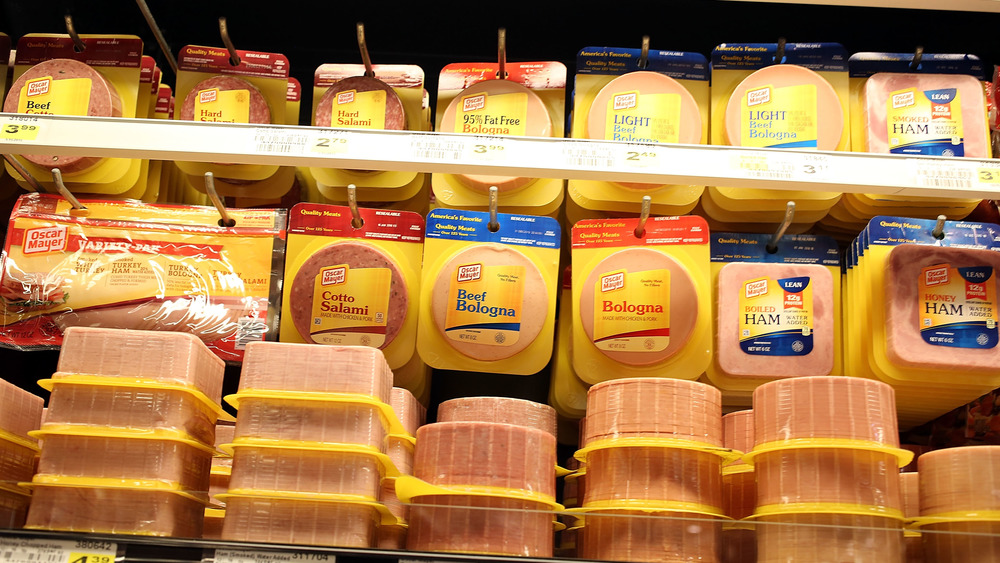The Unexpected Reason Bologna Became Popular In The US
Bologna is a classic cold cut, commonly paired with American cheese and mayo, and sandwiched between two slices of Wonder Bread to make a quick, easy, and portable meal. According to the USDA, bologna is a "cooked sausage," and falls under the same category as frankfurters, hot dogs, and other encased meats. To meet this food definition, bologna is composed of mechanically separated beef, pork, and chicken – or some combination of the three – that is blended together. The pureed meat is then cured and mixed with water and seasonings, including salt, sugar, and pepper, per The Journal Times. It is sometimes placed inside a casing made from the gastrointestinal tracts of cattle, sheep, or hogs. But it might also be enclosed in plastic, as anyone who's bought sliced bologna with bright red plastic casings knows.
The lunch meat takes its name from the city of Bologna, Italy, where its predecessor, mortadella, originated. Mortadella is a type of Italian cooked sausage, which differs from bologna because it is spicier and fattier. Mortadella contains large chunks of pork fat, which give it a distinct marbled appearance, and is often seasoned with flavorful spices like pistachios and red pepper, according to the North American Meat Institute. Although mortadella has been around for many centuries (via Eater), bologna did not achieve great popularity in the United States until around the 1920s. It has been a staple in kids' lunches for decades, and we have the United States government to thank for that.
The National School Lunch Program turned the bologna sandwich into a classic lunch
While mortadella in Italy was considered a delicacy that only the rich could afford to eat, its American counterpart was commonly consumed because it was cheap and easy to produce, per Eater. Especially during the Great Depression, when many people struggled to find work, bologna was a popular meat choice, because it didn't cost much and had a good shelf life.
By around the mid-twentieth century, sandwiches were also gaining in popularity, as the rise of pre-sliced meat and packaged food, in general, began transforming the midday meal landscape. Once again, bologna was a favorite sandwich addition because it was inexpensive and easily accessible. But what helped seal bologna's fate as the ideal sandwich fixing was the establishment of the National School Lunch Program in 1946 (via USA Today 10Best). When President Truman signed the National School Lunch Act into law, he required schools to provide low- or no-cost lunches to school children, per the USDA.
Bologna sandwiches proved to be an easy lunch option that schools could provide to children without breaking the bank. For many Americans, this has resulted in fond memories of bologna sandwiches as being a nostalgic childhood treat, and it remains a popular deli selection for children and adults alike. In 2016 alone, Americans spent almost $500 million dollars on bologna products.

